
Navratri Day 8 is dedicated to worshiping Goddess Mahagauri and Kanya puja. Also known as Maha Ashtami and Durga Ashtami. Shardiya Navratri Day 8 (Maha Ashtami) falls on Wednesday, 14 October in 2021. In Hindu mythology, Mahagauri is the eighth and most beautiful representation of NavaDurga. Many Indian regions also observe Sandhi Puja. She is believed to be the most beautiful and radiant girl. That is why her name is Gauri. She is the Goddess of purity and endurance. It is believed that worshipping her on Maha Ashtami will purify the devotee’s heart and make him pious.
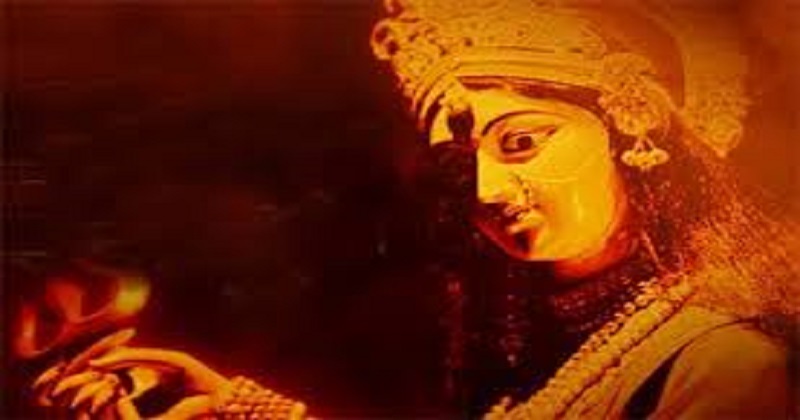
Maha Ashtami, Durga Ashtami
- Date: Sunday, 14 October
- Tithi: Ashwin Sukla Paksha Ashtami
- Goddess: Maa Mahagauri
- Puja: Mahagauri Puja, Kanya puja
- Mantra:‘Om Devi Mahagauryai Namah’
- Flower: Night-blooming jasmine, mogra
- Navratri Color: Purple
The story goes that after receiving hard penance, Goddess Shailputri, who later became Goddess Parvati, gained Lord Shiva as her husband. She became dark and dull due to the hard penance days. Lord Shiva washed her with pure Ganga water when he was impressed by her love and sacrifice. She subsequently appeared White and pearl-like. She was then renamed Mahagauri.
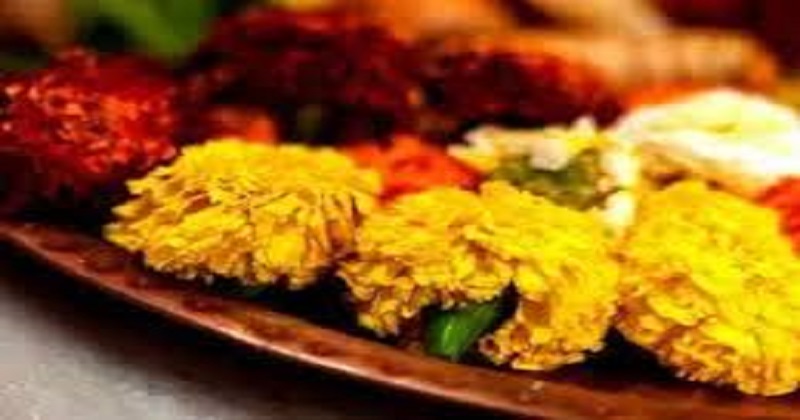
Mahagauri Appearance and Form
Because of her white glowing complexion, this avatar came to be known as Gauri. Her whitish skin tone is mesmerizing and spellbinding. Since she wears white clothes, she is also known as Shwetambardhara. Her deity has four arms. The right hand she is using is in Abhaya Mudra, and the left is carrying Trishul. Her right hand is held in Varada Mudra with her left hand holding a Damaru. As she rides a bull, she is also known as Vrisharudha.
Maha Ashtami Puja Vidhi
Maha Ashtami is also one of the most important ritual days in many parts of the country. On this day, certain rituals are said to be very powerful. Maha Saptami Puja is compared with Shodashopachar Puja at the beginning of the festival.
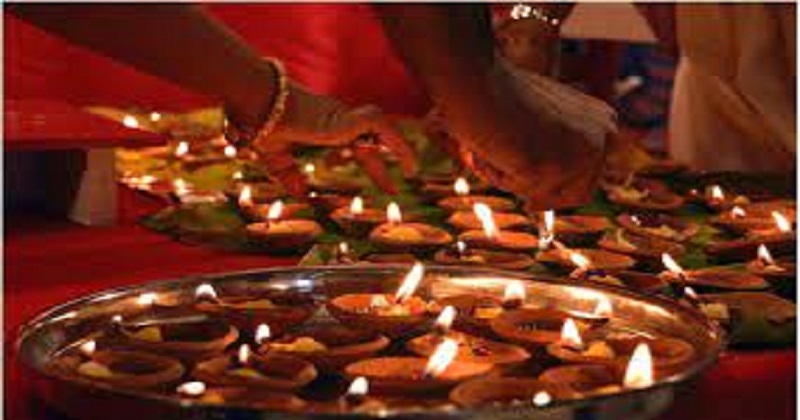
Sandhi Puja begins on this day when Ashtami Tithi ends and Navami Tithi begins. People in some regions believe that giving blood to the Goddess would soothe her and thereby make her cool. The ritual is called Bali. Goats are usually sacrificed to the goddess. The blood is then offered as a sacrifice. Sandhi Kaal is celebrated on the same day by lighting 108 earthen lamps. On this auspicious day, Goddess Kali was said to have appeared from Maa Durga’s forehead. The temples conduct special prayers on these days.
Mahagauri Puja: Invoking the Goddess’s image in nine earthen pots is a devotional practice. Durga is worshipped in nine different forms during Maha Ashtami Puja, and some young unmarried girls are treated like goddesses. On Maha Ashtami, Kanya Puja is performed on a single day during Durga Puja. At the end of Navami Puja, devotees perform Navami Homa, the most important ritual.
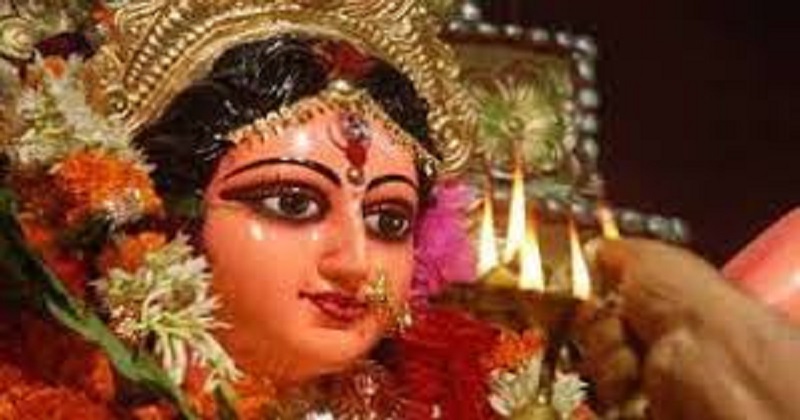
Mahagauri Puja Vidhi as follows
- Begin the worship by wearing yellow clothes.
- The lamps should be burned in front of the mother
- Offer worship to the mother in white or yellow flowers. After that, chant their mantras.
- Midnight worship brings more auspicious results.
- Worship maa in white clothes. Offer white flowers and white dessert to the Maa Mahagauri.
- Also offer perfume. Chant the Maa Mahagauri mantra first. Chant the original mantra of Venus, ‘Shun Shukrai Namah’. Keep using the perfume you offered to Venus.
- Girls are fed on Ashtami tithi. Navratri is not only a festival of fasting and vrat. It is also a festival of women’s power and respect for the daughters.
- Navratri is a tradition in which girls are worshipped every day, however, Ashtami and Navami are definitely worshiped.
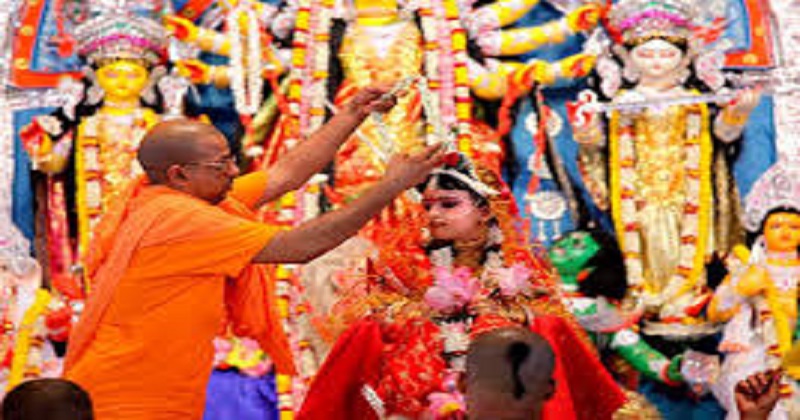
Mahagauri Puja Procedure
1. Mahaasana
2. AtmaPooja – Puja performed to purify oneself
3. Tilak and aachman – Apply tilak on forehead and drink holy water from palms.
4. Sankalpa – Making a wish in front of the Goddess while holding some water in hand.
5. Aavahana and Aasan – Offer flowers
6. Paadhya – Offer water to Devi’s charan.
7. Aachman – Offer karpoor (camphor) mixed water.
8. DugdhaSnan – Offer cow milk for bathing
9. Ghrita and Madhusnan – Offer ghee and honey for bathing
10. Sharkara and Panchamritsnan – Offer sugar and panchaamrita bathing.
11. Vastra – Offer sari or cloth to wear.
12. Chandan – Put Sandalwood tilak on the deity.
13. Put Kumkum on her forehead
14. Kajal, druvapatra and bilwapatra should be offered
15. Dhoopa and deepam is offered
16. Prasad is given to the Goddess
17. Aarti is made
18. Recite the mantra and offer the diya
19. Lord Shiva is also worshipped along with the Devi
20. Kanya puja is also done on this day – nine little girls are invited home and offered food and clothing.
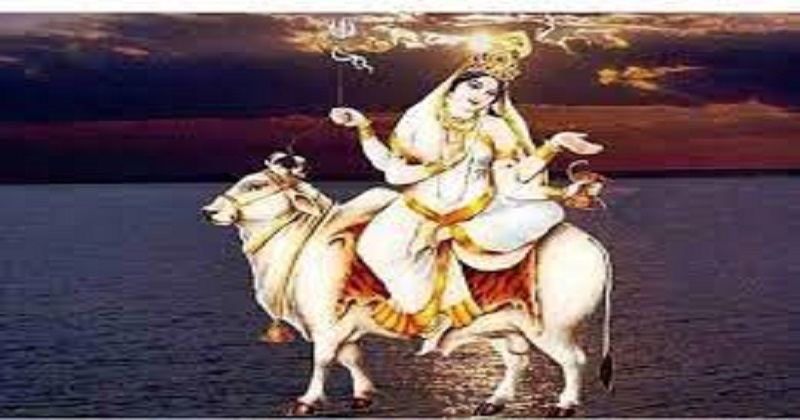
Shri Mahagauri Devi Mantra:-
Om Hreem Shri Maha Gauri Durgaaye Namaha
Om Devi Mahagauryayi Namah Shwete Vrishesamarudha Shwetaambardhara Shuchih |
Mahagauri Shubham Dadyanmahadev Pramodadaa ||
Sarava Mangala Mangalye Shive Sarvartha Sadhike Sharanyei Trymbake Gauri Narayani Namosthute
Navratri 2021 Day 8 Bhog: Maha Gauri Bhog
Worship Maa Mahagauri and offer puri, chana and halwa as bhog.
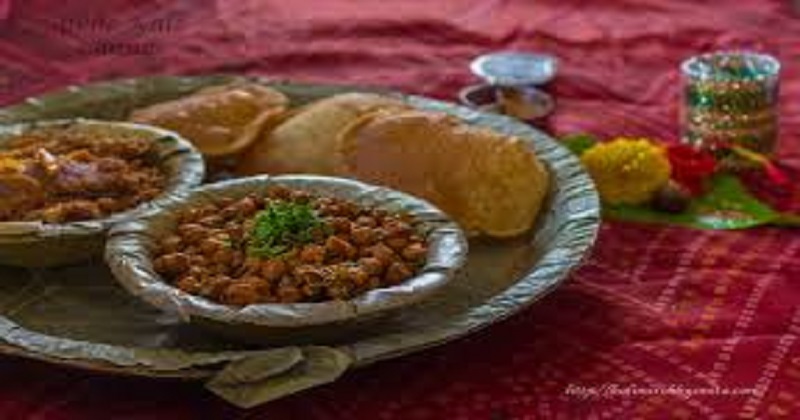
Halwa poori chana prasad
The halwa poori chana prasad is a food prepared during Navaratri fast days to give to girls and after all the rituals, those who have been fasting eat this during their break. This entire meal is considered auspicious and doesn’t contain onions or garlic as it is supposed to be Saatvik.
INGREDIENTS – For Halwa
- 1 cup semolina/suzi/rava
- 1/2 cup sugar or as per taste
- 4 cups water
- 2 green cardamom crushed
- 1 tablespoon nuts chopped
- 1 tablespoon coconut desiccated
- 1 cup clarified butter
For Poori - 2 cups wheat flour
- a pinch salt
- 1 teaspoon oil
- water as required
- oil for frying
For Chana
- 200 gm black chickpea kala chana
- 6-8 cups water
- 1/2 pinch asafetida
- 1 teaspoon cumin seeds
- 1 teaspoon dried fenugreek leaves
Spices - 1 teaspoon coriander powder
- 1 teaspoon red chilly flakes
- 1 teaspoon deggi mirch
- 1 teaspoon turmeric powder
- 2 teaspoon dried mango powder
- salt to taste
- 1 teaspoon garam masala
- 2 tablespoon vegetable oil
Cooking Instructions
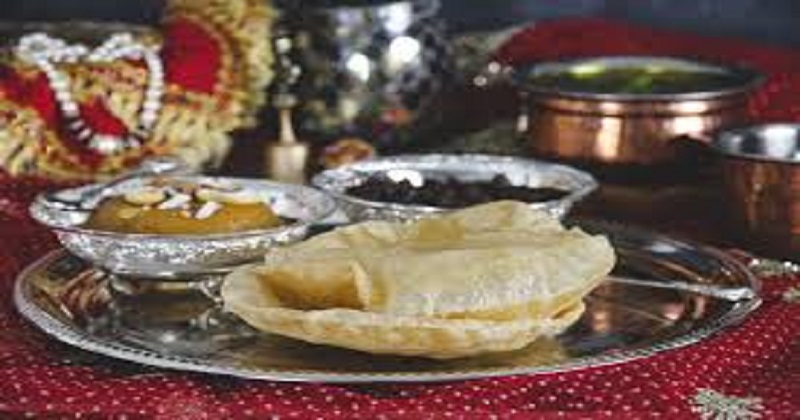
Read more: Navratri 2021 Day 7 – Puja Vidhi, Mantra, Color & Prasad
For Halwa
- In a wide, open-mouthed pan, heat clarified butter. Keep the heat low and roast the semolina for 10-15 minutes, until its color changes from white to light brown.
- 1 minute later, add chopped nuts and stir. Keep the heat low.
- Meanwhile, in a separate pan, add 4 cups water and crushed cardamoms, boil it, then add sugar, and when the sugar melts, turn off the stove.
- The water will burst and splash when you add it to the roasted semolina. Be careful.
- Cook the semolina until water is absorbed into it and ghee appears around the edges.
- Top with desiccated coconut. Enjoy with Chana and Poori.
For Poori - Knead the wheat flour with salt and a teaspoon of oil.
- Make small balls and set them aside.
- In a wok, heat oil, roll out small pooris with a rolling pin (they should be the size of a pancake) and deep-fry them.
For chana - The chickpeas should be soaked for 6 hours or overnight in 8 cups of water. Add a teaspoon of salt and cook for 6 whistles. Turn off the heat and set it aside.
- In a wok, heat the oil, add the cumin seeds, the asafetida, and dried fenugreek leaves. Sauté for 1 minute.
- Maintain a low heat.
- Put all spices and salt in the wok and quickly mix them in oil. When done, turn off the heat.
- Adding the boiled chickpeas with the remaining water, cook for 15 to 20 minutes on low heat until all the water evaporates and the spices and salt are incorporated.
- Serve warm with poori and halwa.

Post Your Comments